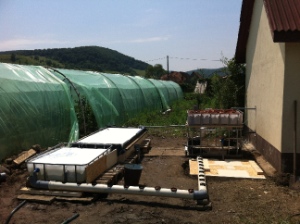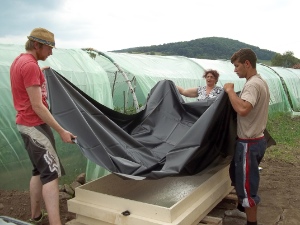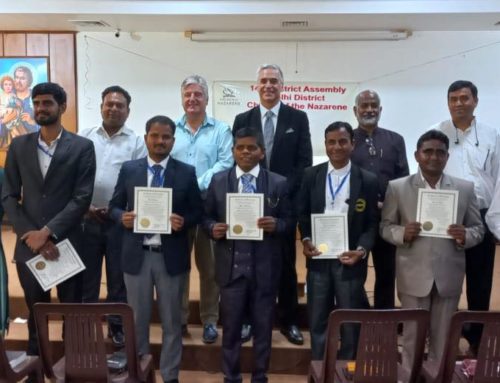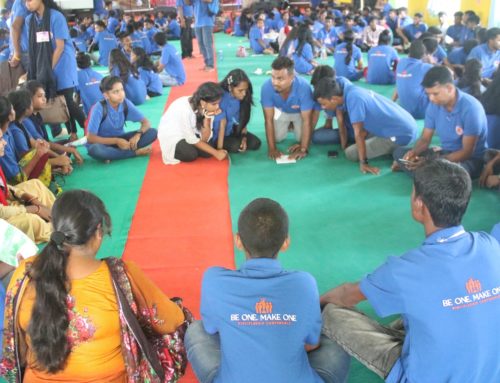
Kyle Petrie, who also helped develop the aquaponics system on the rooftop of a Nazarene church in Jerusalem, Israel, helped the Tigmandru church plan and install the system.
The system, which includes three tanks to raise fish, as well as sections that will grow strawberries, peppers and lettuce, is intended to provide produce to families in the church, and a little income for the congregation, said missionary Roberta Bustin.
“We want to minister to the whole person, so we try to have a holistic ministry,” Bustin said. “Very few (in the village) have permanent jobs. Almost nobody in the church has a job. As part of our ministry to them, we try to provide some part-time jobs for some people.”
Besides the aquaponics system, the church has a green house, a sewing workshop and is hoping to start a woodworking shop this fall, all to equip people with vocational skills and opportunities for an income.
The aquaponics system is self-sustaining, endlessly circulating water between the live fish and the plants. The fish will grow in the tanks, their waste creating ammonia and other byproducts. The waste-filled water will then pass through another tank that holds pieces of fired clay tile and brick that will filter out solvent waste and create an environment for bacteria to grow. The bacteria will convert the ammonia to nitrates, which the plants need to survive and grow.

Strawberries in Romania have a very short growing season, meaning that prices for strawberries are comparatively high compared to other fruits and vegetables. The church will capitalize on that market, expecting to sell more strawberries with the multiple harvests than other farmers could do, according to Bustin.
“We give away a lot of the food from the green houses and also people that come and work in the green houses sometimes get paid with money and sometimes with produce. This is another opportunity to provide food to people,” she said.
They will start out with catfish, which can withstand a very wide range of temperatures; in the fall, when it is cooler, they plan to obtain trout.
The Tigmandru church has been raising money for two years to start the project. A church in New York made the initial contribution. The Church of the Nazarene in Gelnhausen, Germany, held a bazaar from which their raised funds also went to support the aquaponics project, which they sent through Helping Hands Germany.



